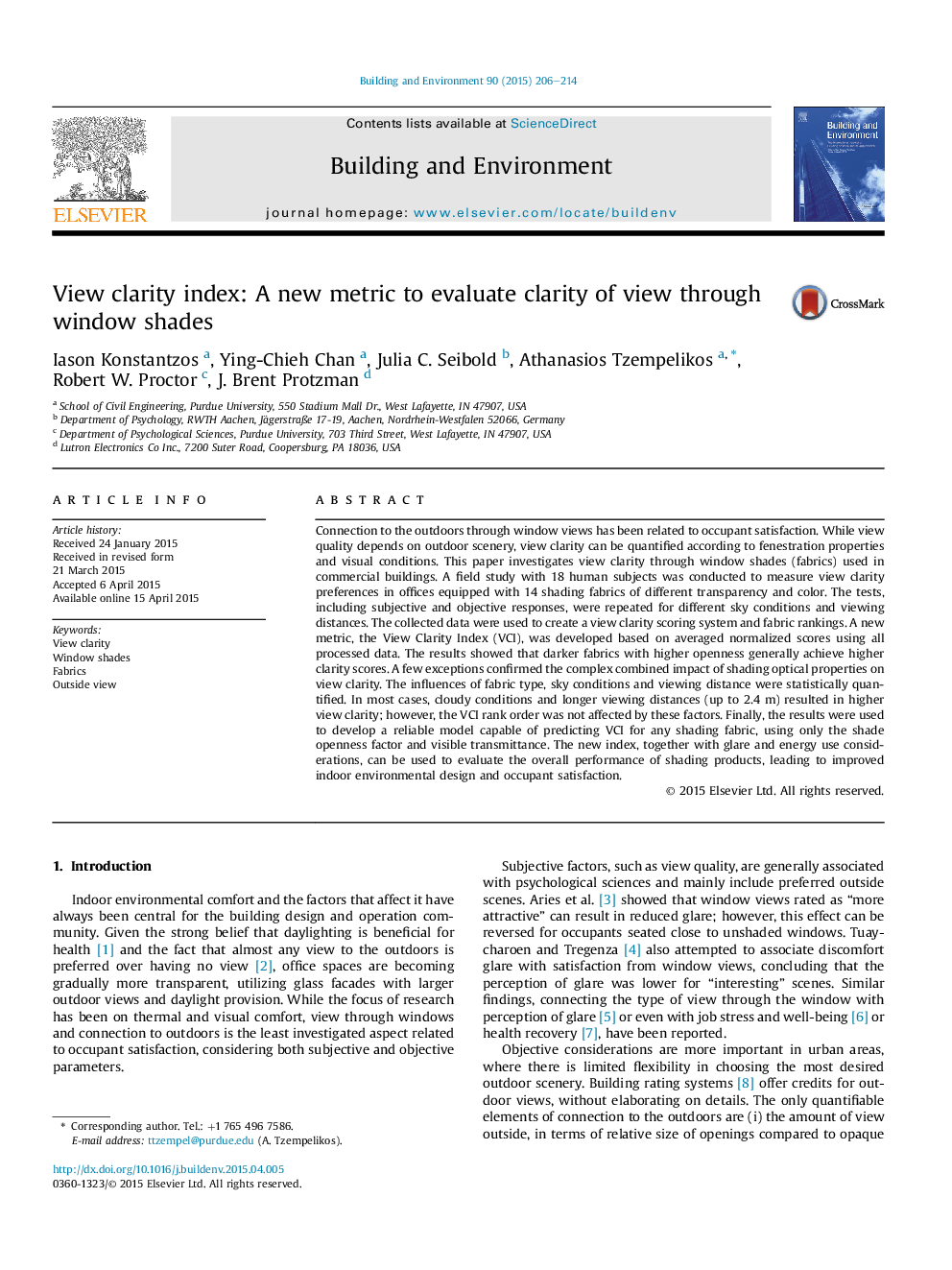| Article ID | Journal | Published Year | Pages | File Type |
|---|---|---|---|---|
| 247871 | Building and Environment | 2015 | 9 Pages |
•We studied the clarity of view through window shades.•A field study with human subjects was conducted.•A new metric, the View Clarity Index (VCI), was developed.•Darker fabrics with higher openness generally achieve higher clarity scores.•Reliable model to predict VCI for any shading fabric using only basic properties.
Connection to the outdoors through window views has been related to occupant satisfaction. While view quality depends on outdoor scenery, view clarity can be quantified according to fenestration properties and visual conditions. This paper investigates view clarity through window shades (fabrics) used in commercial buildings. A field study with 18 human subjects was conducted to measure view clarity preferences in offices equipped with 14 shading fabrics of different transparency and color. The tests, including subjective and objective responses, were repeated for different sky conditions and viewing distances. The collected data were used to create a view clarity scoring system and fabric rankings. A new metric, the View Clarity Index (VCI), was developed based on averaged normalized scores using all processed data. The results showed that darker fabrics with higher openness generally achieve higher clarity scores. A few exceptions confirmed the complex combined impact of shading optical properties on view clarity. The influences of fabric type, sky conditions and viewing distance were statistically quantified. In most cases, cloudy conditions and longer viewing distances (up to 2.4 m) resulted in higher view clarity; however, the VCI rank order was not affected by these factors. Finally, the results were used to develop a reliable model capable of predicting VCI for any shading fabric, using only the shade openness factor and visible transmittance. The new index, together with glare and energy use considerations, can be used to evaluate the overall performance of shading products, leading to improved indoor environmental design and occupant satisfaction.
